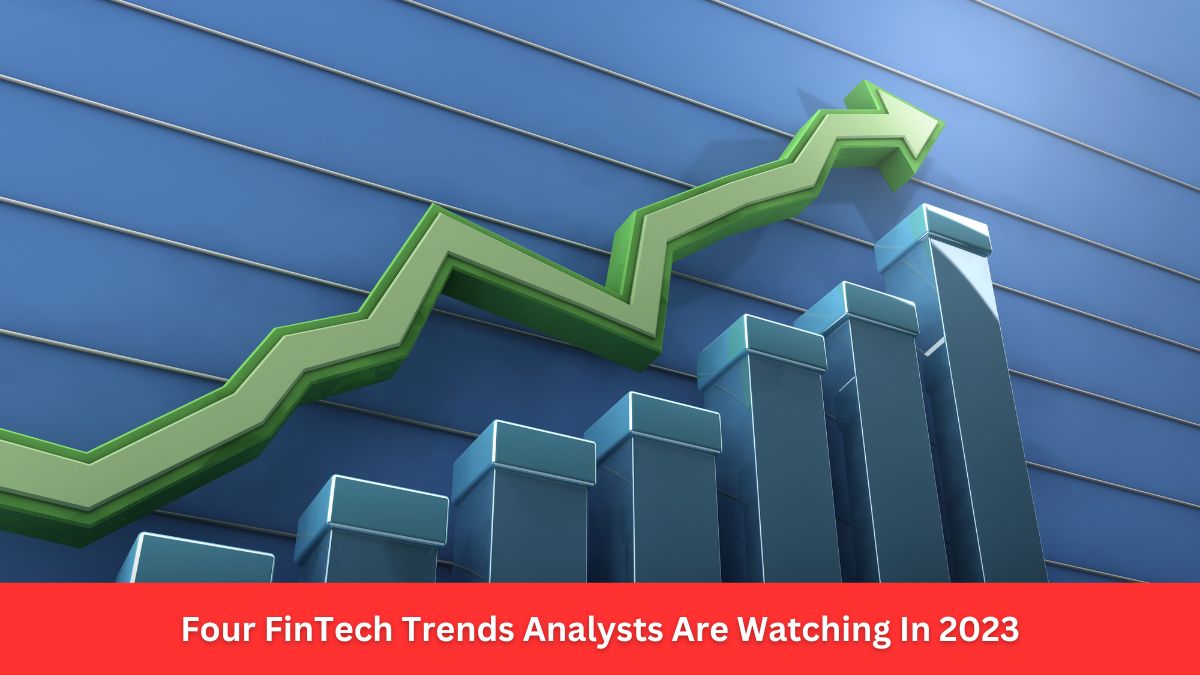The last few years have prompted businesses to streamline their digital transformation efforts. Traditional services have been losing ground to digital ones as the world is progressively migrating to the digital realm, motivating financial enterprises to make swift choices, improve customer service continuously, and incorporate cutting-edge technology into their services. Therefore, businesses and financial institutions have shown increased openness towards fintech, with cloud banking and blockchain among the industry’s most promising and innovative emerging technologies.
Advancements kept going; for instance, Ethereum’s Shanghai upgrade. There are unbeatable benefits to cryptocurrencies. Their supporters believe in a future where flaws will be diminished, and more people will check the Ethereum price today to make payments when they see fit. Similarly, business owners may be more open to accepting digital currency. But for now, let’s see what 2023 prepares for the fintech industry to understand where trends are going.

Cryptocurrency
2023 will be an important year for the crypto industry’s maturation, with oversight from regulators worldwide. However, there are also bad actors coming into this ecosystem. Most regulators have already created rules and regulations for crypto businesses. However, the collapse of multiple companies in 2022 can lead to a refinement of those rules. Because of events like the FTX collapse or the bear market, crypto, and fintech companies must work to regain consumer trust. Improved consumer protection across fintech and crypto companies could be a positive outcome.
Some experts believe crypto will be increasingly adopted as traditional financial institutions and consumers grow comfortable with blockchain technology, smart contracts, and so on, and the regulatory clarity to come, with all of these standing a chance to occur despite the crypto winter.
Finally, Central Bank Digital Currencies (CBDCs) might be in a leading position as central banks seek better ways to conduct monetary policy and develop alternatives to the existing global payment system. India and Japan, for example, announced new pilots and deployments. The Bank of Japan wants to conduct a pilot experiment with private financial institutions to issue the digital yen, while India announced the launch of the digital rupee.
Embedded Finance
You use embedded finance technology to request a car on a ridesharing app, place a mobile food order, or use a mobile payment service. Embedded finance is non-financial enterprises offering financial products and services, whether a coffee shop app offering 1-click payments, an e-commerce merchant providing insurance, or a department store’s credit branded card. The most common embedded finance offerings include payments, insurance, banking, lending, and branded credit cards. These services are only the tip of the iceberg for the embedded financial business, which will exceed $7 trillion worldwide over the next decade.
The beauty of this technology is that it streamlines financial processes. Before its development, there was often a gap between consumers and the companies they conducted business with. The client usually needed a traditional service provider like a bank or a lender to bridge it. The lender would give a person a loan to buy a car, a house, etc., while the bank would offer the credit or debit card used to make the purchase.
The third-party bank or lender disappears, thanks to embedded finance. This year, this technology will be used more in emerging markets. Embedded finance, led by inclusive fintech startups, can empower consumers previously marginalized in the traditional financial industry. Similarly, emerging markets could stimulate innovation by offering a less restrictive environment, with lower prices and a broader client base.
Eventually, more emphasis will be put on tech affordances and operational capacity to overcome challenges like risk and compliance management. AI machine learning, cloud computing, and similar technologies may have multiplier effects across industries and encourage sectors to open up to embedded finance.
Digital Transformation
As digital transformation expands year-on-year, the next wave of change will emphasize the need to investigate new banking demands.
It will be about being able to create new and innovative financial products and services that were previously unavailable or were not widely known, meaning that organizations will have to challenge the status quo and become tolerant towards failure continually.
A business may approach digital transformation for several reasons, among which the survival issue is the most prominent. However, experience and expertise in the field are needed. Otherwise, things are risky. No one can point to the correct way of implementing a successful digital transformation, and only some companies enjoy the fruits of their hard work. Most of the time, it’s a result of lacking a deeper understanding of the factors driving success.
Digital transformation comes down to many things, including the following:
- Using automation to accelerate customer support and service
- IT modernization, like switching to a cloud environment
- Using AI-driven insights to improve sales efficiency
- Reskilling employees
- Being remote-ready.
“Humanising” banking will be another priority for banks and fintech in the future. Scale and efficiency have been achieved. Now it’s taking tech and rehumanizing banking to bring back the human element that was once at the core of in-person, established banking relationships.
Cross-Border Payments
There’s been an ongoing debate over the future of globalization, which is undeniable of interest to the payment industry, as the movement of people, services, goods, and funds will eventually dictate where growth lies.
However, globalization is already embedded in the global economy. The dynamics will persist between developing and developed nations, leading to capital flow across borders and the need for fintech to facilitate it. Sellers supported to seize opportunities across borders through digital commerce can be an example.
The world is increasingly interconnected, and fintech is the global connector for business across borders.
2023 will be an exciting year for retail banking and fintech, with several trends shaping and disrupting the industry’s future. They’ll change how banks operate and significantly impact the customer–financial services interaction.


